Important Monsoon Driving Tips For Car Drive: Safe Monsoon Drive

Important Monsoon Driving Tips For Car Drive: Safe Monsoon Drive
Monsoon Driving Tips For Car - Indian roads have a fun atmosphere in monsoon. Monsoon brings long traffic jams, watering potholes and sudden break situations. It takes a lot of time to prepare for the monsoon in India, not just to prepare some spare clothes in the car. Your entire driving style and routines must be completely changed in order to always be cautious and safe on smooth and wet roads. Here we are giving you some most important monsoon driving tips for car drivers.
The Aware Driver Must Be Aware Of Monsoon Driving Situations
Monsoon Driving Tips
Test Your Tyres
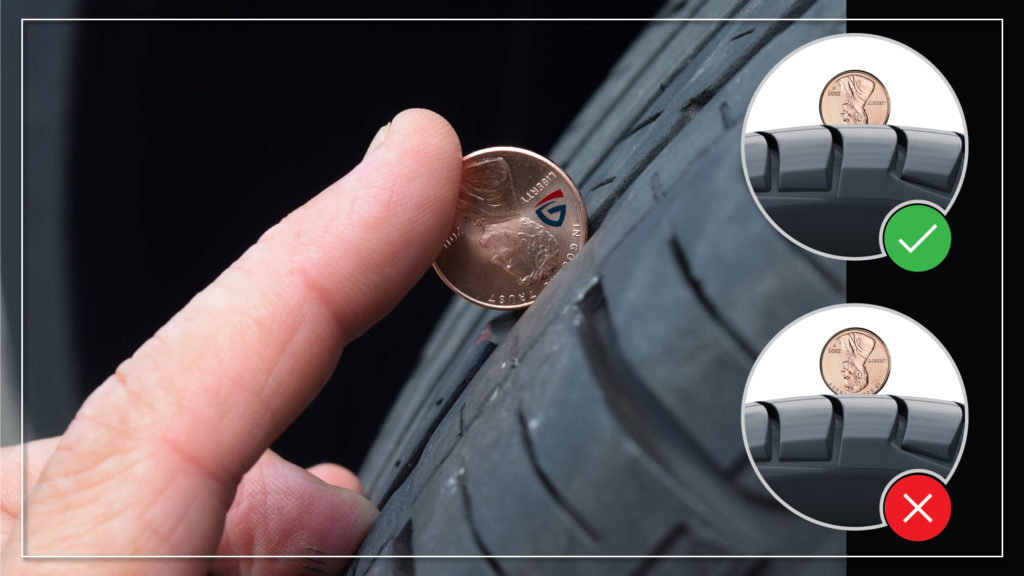 During the monsoon, you must have a set of tires with a sufficient number of treads. The traction on slippery roads is severely impaired, which is made worse by the occasional mixing of water with leaking oil and other vehicle fluids. The tread on the tire helps to guide this mixture away from the contact surface, thereby improving grip. The biggest cause of accidents on wet roads is poor treading of tires. If your tires are not stepped on properly, water/rain cannot escape and therefore will accumulate under the rubber. The more stagnant water, the greater the chance of the car slipping and getting out of control. This phenomenon is called water skiing or water skiing. If the tread of the tire is less than 1.6mm, it may be a good time to obtain a new tire. You can also push a rupee coin into the tread to see how far it has traveled. If it hardly sags, you should get a new tire.
Keep Head Lights and Eyes On
During the monsoon, you must have a set of tires with a sufficient number of treads. The traction on slippery roads is severely impaired, which is made worse by the occasional mixing of water with leaking oil and other vehicle fluids. The tread on the tire helps to guide this mixture away from the contact surface, thereby improving grip. The biggest cause of accidents on wet roads is poor treading of tires. If your tires are not stepped on properly, water/rain cannot escape and therefore will accumulate under the rubber. The more stagnant water, the greater the chance of the car slipping and getting out of control. This phenomenon is called water skiing or water skiing. If the tread of the tire is less than 1.6mm, it may be a good time to obtain a new tire. You can also push a rupee coin into the tread to see how far it has traveled. If it hardly sags, you should get a new tire.
Keep Head Lights and Eyes On
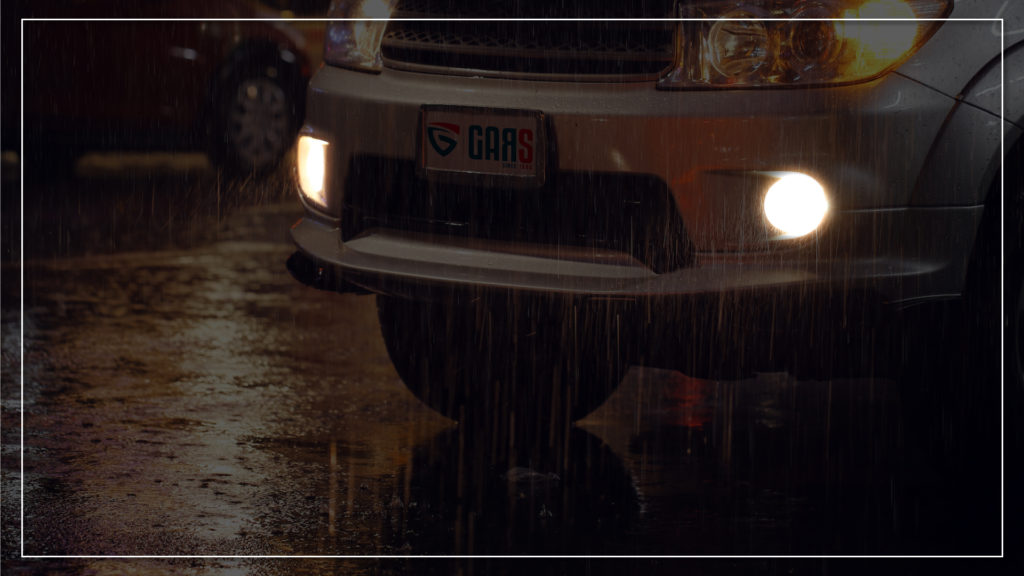 I am sure that the excellent driver who read this article has already driven the car in heavy rain and noticed that the visibility has been greatly reduced. This is a dangerous situation for the driver. Head Lights are one of the most effective ways to help you see better and let other vehicles know that you are nearby. First run all the lights together-headlights (low beam and high beam), brake lights and hazard/indicators. If you find that the lights are dimmed or inconsistent, you need a new set of bulbs. Shaky or fluctuating lights may also indicate a low battery. Fixing uneven beams is equally important to the safety of you and the coming vehicle. If your car is older, you should replace the lens and reflector in the headlights to maximize the use of the headlights. Always keep the headlights low to avoid blocking vehicles driving in the opposite direction.
Check Your Brakes
I am sure that the excellent driver who read this article has already driven the car in heavy rain and noticed that the visibility has been greatly reduced. This is a dangerous situation for the driver. Head Lights are one of the most effective ways to help you see better and let other vehicles know that you are nearby. First run all the lights together-headlights (low beam and high beam), brake lights and hazard/indicators. If you find that the lights are dimmed or inconsistent, you need a new set of bulbs. Shaky or fluctuating lights may also indicate a low battery. Fixing uneven beams is equally important to the safety of you and the coming vehicle. If your car is older, you should replace the lens and reflector in the headlights to maximize the use of the headlights. Always keep the headlights low to avoid blocking vehicles driving in the opposite direction.
Check Your Brakes
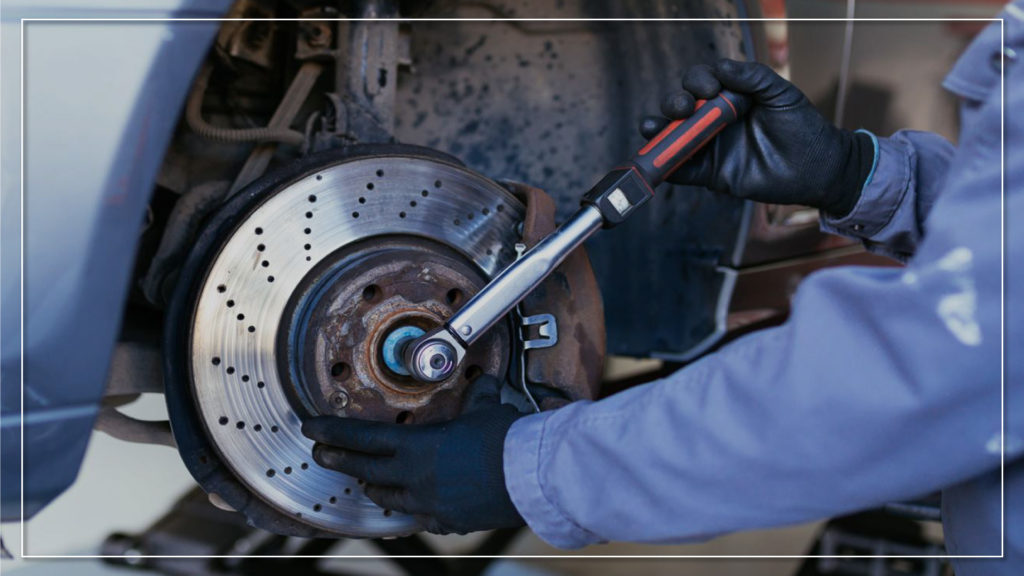 Another thing hindered by wet roads is the braking distance of the car. Regardless of the situation or the weather, the brakes must work correctly. However, worn brakes may further increase the braking distance, and there is a possibility of failure. You can test the brakes at home by starting the engine, letting the car idle for a while and depressing the brake pedal with even force-if the pedal continues to sink, it may be a system leak. In addition, if you feel the brake pedal trembling during daily driving, it may mean that the brake pads are worn out and need to be replaced.
Do not forget to check your brake fluid before leaving. If you are not sure the time you changed your brake fluid, ask for professional’s advice.
Make sure that the brake system of the car is properly inspected by professionals and replace worn components as soon as possible. A well-maintained brake is one of your biggest friends when it rains-especially on wet roads, the braking distance is longer.
Keep The Windshield Wipers Proper
Another thing hindered by wet roads is the braking distance of the car. Regardless of the situation or the weather, the brakes must work correctly. However, worn brakes may further increase the braking distance, and there is a possibility of failure. You can test the brakes at home by starting the engine, letting the car idle for a while and depressing the brake pedal with even force-if the pedal continues to sink, it may be a system leak. In addition, if you feel the brake pedal trembling during daily driving, it may mean that the brake pads are worn out and need to be replaced.
Do not forget to check your brake fluid before leaving. If you are not sure the time you changed your brake fluid, ask for professional’s advice.
Make sure that the brake system of the car is properly inspected by professionals and replace worn components as soon as possible. A well-maintained brake is one of your biggest friends when it rains-especially on wet roads, the braking distance is longer.
Keep The Windshield Wipers Proper
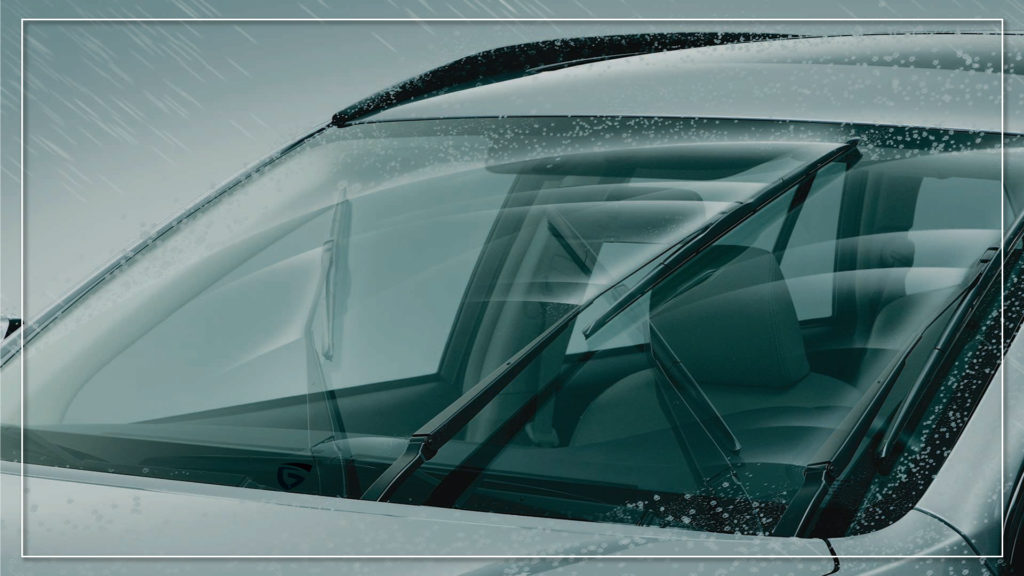 When driving on the rainy road you want 100% or maximum closer visibility. One of the best component that helps you to get clear vision are windshield wipers. The rubber on the wipers clears the dust and any barrier that make tour visibility good at all. As they are important once you should check if they are working properly before driving in rain. It is also important to keep the wiper cleaner filled with soapy water (or windshield water) because it may be difficult to remove viscous debris from the windshield and it may also damage the windshield. Make sure to pay attention to the height of the water tank of the washing machine and fill it up when the water level is low.
It is recommended to replace the wipers at least once a year-preferably before the start of the monsoon. Sometimes, the arm of the wiper may bend and lose the power to clean the windshield. In India, because the summer is so harsh, the rubber on the wipers usually dry out and crack, which may cause poor cleaning during the monsoon season. Replacing the entire set of wiper blades or rubber components is cheap and is extremely important for anyone traveling in the rain.
Battery Concern
When driving on the rainy road you want 100% or maximum closer visibility. One of the best component that helps you to get clear vision are windshield wipers. The rubber on the wipers clears the dust and any barrier that make tour visibility good at all. As they are important once you should check if they are working properly before driving in rain. It is also important to keep the wiper cleaner filled with soapy water (or windshield water) because it may be difficult to remove viscous debris from the windshield and it may also damage the windshield. Make sure to pay attention to the height of the water tank of the washing machine and fill it up when the water level is low.
It is recommended to replace the wipers at least once a year-preferably before the start of the monsoon. Sometimes, the arm of the wiper may bend and lose the power to clean the windshield. In India, because the summer is so harsh, the rubber on the wipers usually dry out and crack, which may cause poor cleaning during the monsoon season. Replacing the entire set of wiper blades or rubber components is cheap and is extremely important for anyone traveling in the rain.
Battery Concern
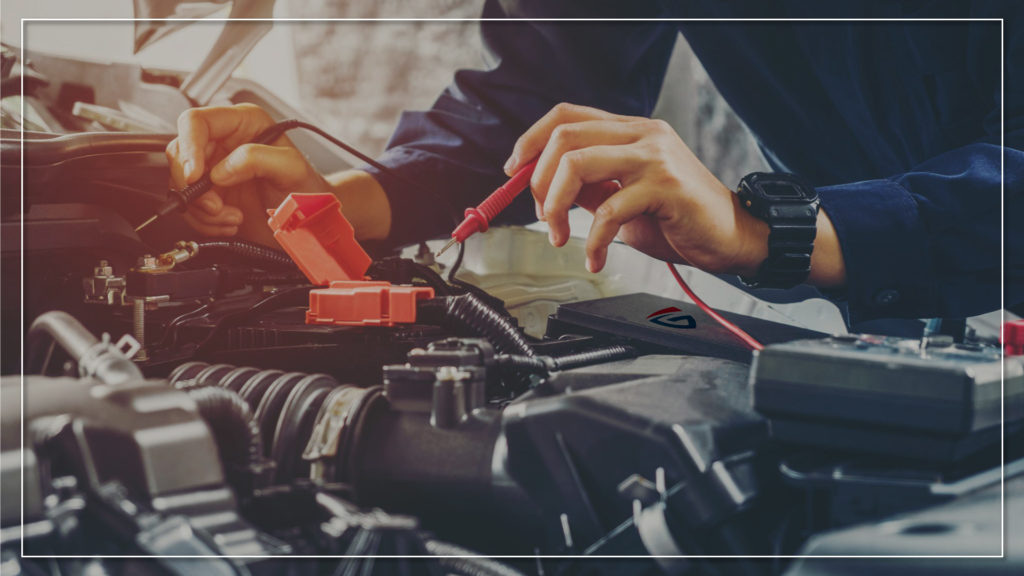 During the monsoon, because you use headlights, wipers and air conditioners more than usual, the battery will be under tremendous pressure from other parts of the car. This will put pressure on your battery, so maintaining the battery is a top priority. But more importantly, it is affected by increased air humidity. At the same time, the wires in the car are also dangerous, because water and electricity simply cannot get along. Improperly maintained wires will eventually cause a short circuit when in contact with water.
Maintain Your Distance
During the monsoon, because you use headlights, wipers and air conditioners more than usual, the battery will be under tremendous pressure from other parts of the car. This will put pressure on your battery, so maintaining the battery is a top priority. But more importantly, it is affected by increased air humidity. At the same time, the wires in the car are also dangerous, because water and electricity simply cannot get along. Improperly maintained wires will eventually cause a short circuit when in contact with water.
Maintain Your Distance
 When the sun is shining and the road is dry, the distance between you and the vehicle in front of the highway should be set to a rule of 3 seconds. Obviously, during the monsoon season, the distance must increase at least three times. As mentioned earlier, the longer the car decelerates, the safer you are on the road. Therefore, even if the vehicle in front of you suddenly brakes, you have enough time to slow down and stop, then hit the bumper.
Welcome your monsoon with pre-monsoon preparation. I m sure your next rainy drive will be great enough to please you. Hope you get satisfied monsoon driving tips and tricks information. Comment your questions or doubts or else enjoy valuable information with a cup of tea.
Get Free Distrorship
By : GARS LUBRICANTS
Tags: car tips driving tips monsoon car driving tips
When the sun is shining and the road is dry, the distance between you and the vehicle in front of the highway should be set to a rule of 3 seconds. Obviously, during the monsoon season, the distance must increase at least three times. As mentioned earlier, the longer the car decelerates, the safer you are on the road. Therefore, even if the vehicle in front of you suddenly brakes, you have enough time to slow down and stop, then hit the bumper.
Welcome your monsoon with pre-monsoon preparation. I m sure your next rainy drive will be great enough to please you. Hope you get satisfied monsoon driving tips and tricks information. Comment your questions or doubts or else enjoy valuable information with a cup of tea.
Get Free Distrorship
By : GARS LUBRICANTS
Tags: car tips driving tips monsoon car driving tips
 During the monsoon, you must have a set of tires with a sufficient number of treads. The traction on slippery roads is severely impaired, which is made worse by the occasional mixing of water with leaking oil and other vehicle fluids. The tread on the tire helps to guide this mixture away from the contact surface, thereby improving grip. The biggest cause of accidents on wet roads is poor treading of tires. If your tires are not stepped on properly, water/rain cannot escape and therefore will accumulate under the rubber. The more stagnant water, the greater the chance of the car slipping and getting out of control. This phenomenon is called water skiing or water skiing. If the tread of the tire is less than 1.6mm, it may be a good time to obtain a new tire. You can also push a rupee coin into the tread to see how far it has traveled. If it hardly sags, you should get a new tire.
Keep Head Lights and Eyes On
During the monsoon, you must have a set of tires with a sufficient number of treads. The traction on slippery roads is severely impaired, which is made worse by the occasional mixing of water with leaking oil and other vehicle fluids. The tread on the tire helps to guide this mixture away from the contact surface, thereby improving grip. The biggest cause of accidents on wet roads is poor treading of tires. If your tires are not stepped on properly, water/rain cannot escape and therefore will accumulate under the rubber. The more stagnant water, the greater the chance of the car slipping and getting out of control. This phenomenon is called water skiing or water skiing. If the tread of the tire is less than 1.6mm, it may be a good time to obtain a new tire. You can also push a rupee coin into the tread to see how far it has traveled. If it hardly sags, you should get a new tire.
Keep Head Lights and Eyes On
 I am sure that the excellent driver who read this article has already driven the car in heavy rain and noticed that the visibility has been greatly reduced. This is a dangerous situation for the driver. Head Lights are one of the most effective ways to help you see better and let other vehicles know that you are nearby. First run all the lights together-headlights (low beam and high beam), brake lights and hazard/indicators. If you find that the lights are dimmed or inconsistent, you need a new set of bulbs. Shaky or fluctuating lights may also indicate a low battery. Fixing uneven beams is equally important to the safety of you and the coming vehicle. If your car is older, you should replace the lens and reflector in the headlights to maximize the use of the headlights. Always keep the headlights low to avoid blocking vehicles driving in the opposite direction.
Check Your Brakes
I am sure that the excellent driver who read this article has already driven the car in heavy rain and noticed that the visibility has been greatly reduced. This is a dangerous situation for the driver. Head Lights are one of the most effective ways to help you see better and let other vehicles know that you are nearby. First run all the lights together-headlights (low beam and high beam), brake lights and hazard/indicators. If you find that the lights are dimmed or inconsistent, you need a new set of bulbs. Shaky or fluctuating lights may also indicate a low battery. Fixing uneven beams is equally important to the safety of you and the coming vehicle. If your car is older, you should replace the lens and reflector in the headlights to maximize the use of the headlights. Always keep the headlights low to avoid blocking vehicles driving in the opposite direction.
Check Your Brakes
 Another thing hindered by wet roads is the braking distance of the car. Regardless of the situation or the weather, the brakes must work correctly. However, worn brakes may further increase the braking distance, and there is a possibility of failure. You can test the brakes at home by starting the engine, letting the car idle for a while and depressing the brake pedal with even force-if the pedal continues to sink, it may be a system leak. In addition, if you feel the brake pedal trembling during daily driving, it may mean that the brake pads are worn out and need to be replaced.
Do not forget to check your brake fluid before leaving. If you are not sure the time you changed your brake fluid, ask for professional’s advice.
Make sure that the brake system of the car is properly inspected by professionals and replace worn components as soon as possible. A well-maintained brake is one of your biggest friends when it rains-especially on wet roads, the braking distance is longer.
Keep The Windshield Wipers Proper
Another thing hindered by wet roads is the braking distance of the car. Regardless of the situation or the weather, the brakes must work correctly. However, worn brakes may further increase the braking distance, and there is a possibility of failure. You can test the brakes at home by starting the engine, letting the car idle for a while and depressing the brake pedal with even force-if the pedal continues to sink, it may be a system leak. In addition, if you feel the brake pedal trembling during daily driving, it may mean that the brake pads are worn out and need to be replaced.
Do not forget to check your brake fluid before leaving. If you are not sure the time you changed your brake fluid, ask for professional’s advice.
Make sure that the brake system of the car is properly inspected by professionals and replace worn components as soon as possible. A well-maintained brake is one of your biggest friends when it rains-especially on wet roads, the braking distance is longer.
Keep The Windshield Wipers Proper
 When driving on the rainy road you want 100% or maximum closer visibility. One of the best component that helps you to get clear vision are windshield wipers. The rubber on the wipers clears the dust and any barrier that make tour visibility good at all. As they are important once you should check if they are working properly before driving in rain. It is also important to keep the wiper cleaner filled with soapy water (or windshield water) because it may be difficult to remove viscous debris from the windshield and it may also damage the windshield. Make sure to pay attention to the height of the water tank of the washing machine and fill it up when the water level is low.
It is recommended to replace the wipers at least once a year-preferably before the start of the monsoon. Sometimes, the arm of the wiper may bend and lose the power to clean the windshield. In India, because the summer is so harsh, the rubber on the wipers usually dry out and crack, which may cause poor cleaning during the monsoon season. Replacing the entire set of wiper blades or rubber components is cheap and is extremely important for anyone traveling in the rain.
Battery Concern
When driving on the rainy road you want 100% or maximum closer visibility. One of the best component that helps you to get clear vision are windshield wipers. The rubber on the wipers clears the dust and any barrier that make tour visibility good at all. As they are important once you should check if they are working properly before driving in rain. It is also important to keep the wiper cleaner filled with soapy water (or windshield water) because it may be difficult to remove viscous debris from the windshield and it may also damage the windshield. Make sure to pay attention to the height of the water tank of the washing machine and fill it up when the water level is low.
It is recommended to replace the wipers at least once a year-preferably before the start of the monsoon. Sometimes, the arm of the wiper may bend and lose the power to clean the windshield. In India, because the summer is so harsh, the rubber on the wipers usually dry out and crack, which may cause poor cleaning during the monsoon season. Replacing the entire set of wiper blades or rubber components is cheap and is extremely important for anyone traveling in the rain.
Battery Concern
 During the monsoon, because you use headlights, wipers and air conditioners more than usual, the battery will be under tremendous pressure from other parts of the car. This will put pressure on your battery, so maintaining the battery is a top priority. But more importantly, it is affected by increased air humidity. At the same time, the wires in the car are also dangerous, because water and electricity simply cannot get along. Improperly maintained wires will eventually cause a short circuit when in contact with water.
Maintain Your Distance
During the monsoon, because you use headlights, wipers and air conditioners more than usual, the battery will be under tremendous pressure from other parts of the car. This will put pressure on your battery, so maintaining the battery is a top priority. But more importantly, it is affected by increased air humidity. At the same time, the wires in the car are also dangerous, because water and electricity simply cannot get along. Improperly maintained wires will eventually cause a short circuit when in contact with water.
Maintain Your Distance
 When the sun is shining and the road is dry, the distance between you and the vehicle in front of the highway should be set to a rule of 3 seconds. Obviously, during the monsoon season, the distance must increase at least three times. As mentioned earlier, the longer the car decelerates, the safer you are on the road. Therefore, even if the vehicle in front of you suddenly brakes, you have enough time to slow down and stop, then hit the bumper.
Welcome your monsoon with pre-monsoon preparation. I m sure your next rainy drive will be great enough to please you. Hope you get satisfied monsoon driving tips and tricks information. Comment your questions or doubts or else enjoy valuable information with a cup of tea.
Get Free Distrorship
By : GARS LUBRICANTS
Tags: car tips driving tips monsoon car driving tips
When the sun is shining and the road is dry, the distance between you and the vehicle in front of the highway should be set to a rule of 3 seconds. Obviously, during the monsoon season, the distance must increase at least three times. As mentioned earlier, the longer the car decelerates, the safer you are on the road. Therefore, even if the vehicle in front of you suddenly brakes, you have enough time to slow down and stop, then hit the bumper.
Welcome your monsoon with pre-monsoon preparation. I m sure your next rainy drive will be great enough to please you. Hope you get satisfied monsoon driving tips and tricks information. Comment your questions or doubts or else enjoy valuable information with a cup of tea.
Get Free Distrorship
By : GARS LUBRICANTS
Tags: car tips driving tips monsoon car driving tips